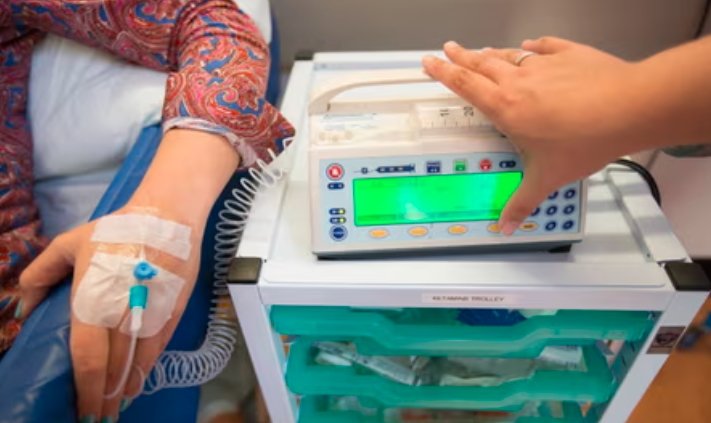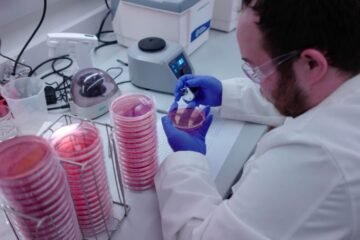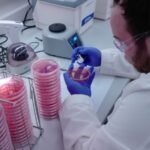Interest in ketamine-assisted therapy is rising fast as NHS psychiatrists seek alternatives to electroconvulsive treatment for those with the toughest mental health cases.
Scotland may soon become one of the first places in the UK to bring ketamine therapy under the NHS umbrella — and not just for pain relief or anaesthesia. Psychiatrists are now asking if the once-taboo party drug could genuinely help people trapped in the darkest corners of depression.
At the Royal Edinburgh Hospital, Prof Andrew McIntosh is pushing for a clinic offering ketamine to be operational by the end of this year. For patients with depression so severe it hasn’t responded to standard treatments, this could be a radical shift in care — and potentially, in lives.
A growing appetite for alternatives
Electroconvulsive therapy (ECT) has long been the go-to option for treatment-resistant depression. It’s effective — for some — but not without controversy. It involves passing electric currents through the brain, which can lead to memory loss and confusion. For many, it’s a last resort.
So what if there was something else?
McIntosh believes ketamine might be that something. “We’re not trying to replace everything,” he said. “But for some people, this could be another tool when nothing else is working.”
In other words: if the brain’s stuck in a loop, maybe a short, well-managed jolt — chemical this time, not electrical — could interrupt the cycle.

Private clinics already moving ahead
While the NHS moves cautiously, the private sector isn’t waiting. Last year, a small clinic in Hamilton, Lanarkshire — The Eulas Clinic — opened its doors to people with treatment-resistant depression.
At £6,000 for four intravenous infusions and a run of therapy sessions, it’s far from cheap.
But clients are paying — and some say it’s helping.
Alex, a 40-year-old American expat now living in Scotland, turned to the clinic after years of feeling like nothing worked. “I was crying all day while working,” she said. “I wasn’t interested in anything new. I felt completely stuck.”
She’s now one of just a dozen patients at the Eulas Clinic who’ve undergone ketamine-assisted therapy in the past year. And though early days, her experience adds to the quiet drumbeat of anecdotal success stories starting to build across the UK.
Why ketamine?
Originally developed as an anaesthetic in the 1960s, ketamine’s reputation veered sideways over the years. It became a mainstay on party scenes, known for its trance-like highs and occasional nightmarish side effects. It’s also addictive — when misused.
But in tightly controlled clinical settings, it’s proving surprisingly effective. Especially when paired with psychotherapy.
Doctors call this “off-label” use — meaning it’s not officially licensed for depression, but can be prescribed if the medical team deems it appropriate.
And so far, early studies from the U.S. and UK suggest that small doses of ketamine — often administered intravenously — can produce dramatic mood shifts in people who’ve felt nothing for years.
One dose doesn’t fix everything. But it can offer a sliver of light — enough for talk therapy to actually begin to work.
The science is still emerging
Still, the research isn’t rock-solid. Not yet.
Clinical trials show promising results, especially in the short term. But critics warn that the long-term effects of repeated ketamine use, especially for mood disorders, aren’t fully understood.
And there are risks:
-
Dissociation and hallucinations during treatment
-
Potential bladder and kidney issues with chronic use
-
Possibility of addiction, especially without proper oversight
Which is why NHS involvement — with rigorous checks, safeguards, and public accountability — could be key to making this treatment both safer and more accessible.
Table: Comparison of Treatments for Resistant Depression
| Treatment Method | Cost (Estimated) | Side Effects | Time to See Results | Availability in Scotland |
|---|---|---|---|---|
| SSRIs (e.g. fluoxetine) | Free on NHS | Nausea, insomnia, sexual dysfunction | 4–6 weeks | Widely available |
| ECT | Free on NHS | Memory loss, confusion | 1–2 weeks (post sessions) | Available in major hospitals |
| Ketamine (IV) | £6,000 privately | Dissociation, increased BP | Within hours to days | Limited (private only, for now) |
That price tag? Definitely a sticking point. Especially when mental health budgets are already stretched.
Why now?
The timing might seem odd. NHS Scotland has been under immense pressure in recent years — from GP shortages to delayed cancer diagnoses and record A&E wait times.
So why throw ketamine into the mix?
Because untreated depression isn’t just a personal burden. It’s an economic one. People can’t work. Families break down. Emergency services are used more. The cost of doing nothing is often higher than the price of a new treatment.
And with estimates suggesting that around one in ten people in Scotland suffer from some form of depression — with 10-30% of those cases resistant to traditional treatments — the case for new options becomes more urgent by the day.
But will it work in the NHS?
That’s the real question.
Private clinics have more flexibility, fewer regulatory hurdles, and the ability to work with small patient groups. The NHS, by contrast, is a slow-moving behemoth.
Setting up a ketamine clinic at a public hospital involves:
-
Licencing and legal approval for a controlled substance
-
Specialist staff training
-
Careful screening to avoid addiction risks
-
Psychotherapeutic support before, during, and after each dose
And, of course, funding.
Yet McIntosh remains optimistic. “We’re working with what we have,” he said. “It’s not about replacing therapies. It’s about offering hope where there wasn’t any.”
What’s next?
A formal pilot clinic could open by the end of this year in Edinburgh. If successful, it may trigger similar clinics in Glasgow, Dundee, and Aberdeen.
But even if the science pans out, public perception could be a hurdle.
Ketamine still carries a heavy stigma. Convincing the general public — and maybe even some clinicians — that it’s safe, ethical, and helpful won’t be easy.
But for some patients who’ve tried everything else, it might be their only shot.


















